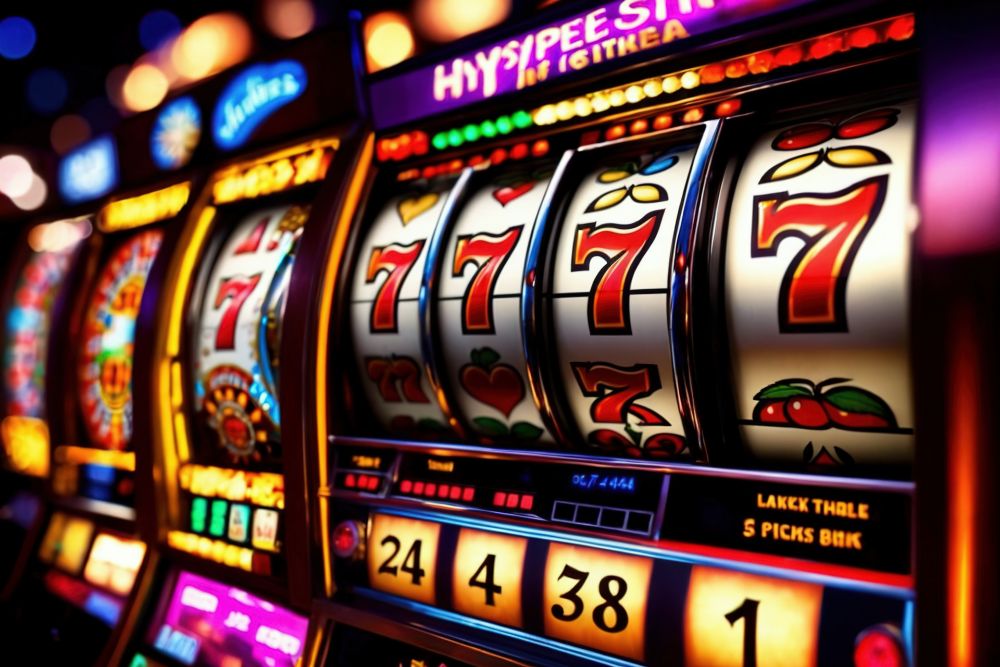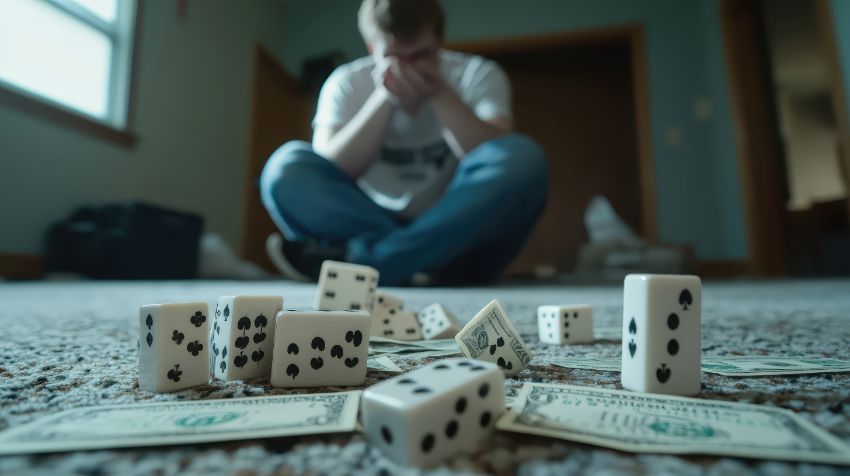The Psychology Behind Slot Machine Design and Player Engagement
11 min read
Slot machines employ various psychological techniques to engage players and encourage continued use. The design elements of these machines are based on principles of behavioral psychology and neuroscience.
Visual and auditory stimuli play a crucial role in attracting players.
Bright colors, flashing lights, and distinctive sounds create an environment of excitement and stimulation. These elements are carefully calibrated to maintain player interest without causing sensory overload.
The intermittent reinforcement schedule, a key principle in operant conditioning, is central to slot machine design.
This schedule provides rewards at unpredictable intervals, which has been shown to be more effective in maintaining behavior than consistent reinforcement.
This uncertainty triggers the release of dopamine in the brain, creating a sense of anticipation and pleasure.
Near-miss experiences, where the outcome is close to a win, are intentionally programmed into slot machines.
These experiences activate similar neural pathways as actual wins, encouraging players to continue in the belief that a win is imminent.
The use of familiar themes, such as popular movies or TV shows, creates a sense of comfort and familiarity, potentially lowering a player’s guard and encouraging longer play sessions.
Multiple paylines and bonus features increase the complexity of the game, giving players the illusion of control and skill.
This complexity can lead to cognitive overload, making it difficult for players to accurately assess their odds of winning.
While these design elements are effective in engaging players, it is important to note that they can contribute to problematic gambling behaviors in susceptible individuals.
Responsible gambling practices and awareness of these psychological tactics are crucial for maintaining a balanced approach to casino gaming.
The Allure of Uncertainty
Slot machine design incorporates uncertainty as a key element to attract and retain players.
The unpredictable nature of each spin creates a sense of anticipation and potential reward. This uncertainty aligns with human psychology, as individuals often find novelty and unpredictability engaging.
Slot machines utilize varied outcomes to generate suspense and maintain player interest.
Each spin represents a new opportunity, which can encourage continued play. The concept of random reinforcement, where rewards are distributed unpredictably, has been shown to be a powerful motivator in behavioral psychology.
Research has demonstrated that the act of anticipation during gambling activities can trigger the release of dopamine in the brain.
Dopamine is associated with pleasure and reward-seeking behavior. The combination of near misses and occasional wins creates a pattern that can reinforce continued play.
The design of slot machines often incorporates features that maximize the impact of uncertainty.
These may include visual and auditory cues that heighten the sense of anticipation and celebrate wins, regardless of their size. Such design elements aim to maintain player engagement and encourage extended play sessions.
It is important to note that while the allure of uncertainty can make slot machines compelling, it can also contribute to problematic gambling behaviors in some individuals.
Responsible gambling practices and awareness of the psychological mechanisms at play are crucial considerations in the context of slot machine design and usage.
Visual Stimuli and Design
Slot machine design incorporates specific visual elements to attract and retain player attention. These elements include bright colors, flashing lights, and dynamic animations.
Casinos strategically position these machines to be highly visible upon entry.
Color psychology plays a significant role in slot machine aesthetics. Designers often utilize warm hues like red and gold, which have cultural associations with prosperity and good fortune in many societies.
These color choices aim to create a positive emotional response in players.
Flashing lights serve multiple purposes in slot machine design. They highlight winning combinations and bonus rounds, providing visual reinforcement of success.
This feature is intended to stimulate continued play by creating a sense of achievement and anticipation.
Dynamic animations in slot machines serve to maintain player engagement. These animations often create the appearance of near-misses, where symbols almost align for a winning combination.
Research suggests that near-misses can be as stimulating to players as actual wins, potentially encouraging further play.
The visual design of slot machines is the result of extensive research and testing.
Designers aim to create an environment that’s visually stimulating and psychologically engaging.
While these design elements can enhance the gaming experience, it’s important to note that they don’t affect the randomness or fairness of the game outcomes, which are determined by random number generators.
Sound Effects in Play
Soundscapes in slot machine design play a significant role in shaping player experience, comparable to visual elements.
The audio components of slot machines are carefully engineered to enhance engagement and influence player behavior.
Key aspects of slot machine sound design include:
-
Ambient background music: Provides a consistent auditory environment that maintains player focus.
-
Win-related sounds: Celebratory tones and jingles associated with winning combinations reinforce positive outcomes.
-
Near-miss effects: Specific sounds for near-winning scenarios encourage continued play.
-
Reel spinning sounds: Mechanical or simulated noises build anticipation during each spin.
-
Coin sounds: Auditory feedback mimicking the sound of coin payouts, even in digital machines.
-
Loss minimization: Subtle tones for losing spins designed to reduce negative associations.
Research has shown that these auditory cues can influence player perception and behavior.
A study by Dixon et al. (2014) found that win-related sounds can lead players to overestimate their frequency of winning.
Additionally, Griffiths and Parke (2005) noted that background music can affect gambling behavior, potentially increasing the speed of bet placement.
The strategic use of sound in slot machines serves multiple purposes:
-
Enhancing immersion and engagement
-
Creating a sense of excitement and anticipation
-
Reinforcing positive outcomes
-
Encouraging continued play
-
Minimizing the impact of losses
While sound design in slot machines can contribute to player enjoyment, it’s important to recognize its potential role in promoting extended gambling sessions.
Responsible gaming initiatives often include options for players to adjust or disable sound effects to mitigate their impact on decision-making.
Reward Systems and Dopamine
Slot machines’ appeal is linked to the brain’s reward systems and dopamine function.
During slot machine play, the brain releases dopamine, a neurotransmitter associated with pleasure and reward. This neurochemical response creates feelings of excitement and positive reinforcement, potentially encouraging continued play.
Slot machine designers incorporate features that capitalize on this neurological process. The games are programmed to deliver frequent, small wins, which trigger dopamine release and maintain player engagement, even in the absence of large payouts.
This pattern of intermittent reinforcement can create a sense of anticipation with each spin.
The visual and auditory elements of slot machines, including bright colors, dynamic graphics, and distinctive sounds, are designed to enhance the sensory experience and potentially amplify the dopamine response.
These features contribute to an immersive environment that may increase the likelihood of prolonged play.
The combination of intermittent reinforcement and sensory stimulation in slot machines can lead to difficulty in discontinuing play for some individuals.
This effect is rooted in the brain’s reward circuitry and the repeated activation of dopamine pathways.
Understanding these neurological mechanisms provides insight into the addictive potential of slot machines and similar gaming experiences.
Variable Ratio Reinforcement
Variable ratio reinforcement is a psychological principle employed in slot machines and other gambling devices.
This mechanism involves rewarding players at unpredictable intervals, creating an element of uncertainty that maintains engagement. The unpredictability of rewards activates the brain’s reward system, potentially leading to prolonged play.
The concept operates on the premise that each spin or action has the possibility of yielding a reward, regardless of previous outcomes.
This unpredictability mimics certain natural reward patterns found in the environment, such as foraging for food in the wild. Slot machines capitalize on this principle by offering sporadic payouts, which can be more effective in maintaining player interest compared to a consistent, predictable reward schedule.
Research has shown that variable ratio reinforcement can be highly effective in shaping behavior.
In the context of gambling, it can contribute to extended play sessions as players anticipate potential rewards. However, it’s important to note that while this mechanism can create an engaging experience, it can also contribute to problematic gambling behaviors in susceptible individuals.
The effectiveness of variable ratio reinforcement in slot machines and similar games has led to discussions about responsible gambling practices and the ethical implications of using such psychological principles in game design.
Regulators and industry stakeholders continue to debate the appropriate balance between entertainment value and consumer protection in gambling products.
Near-Miss Effect
The near-miss effect is a psychological phenomenon observed in gambling, particularly in slot machine design. It occurs when a player experiences an outcome that’s close to winning but falls short.
This effect has been studied for its impact on player behavior and engagement.
In slot machines, near-misses are programmed to occur more frequently than would be expected by chance.
When two out of three symbols align, players often interpret this as a sign of impending success, despite the random nature of the game. This perception can lead to increased motivation to continue playing.
Research has shown that near-misses activate similar brain regions as actual wins, particularly those associated with reward processing.
The brain releases dopamine, a neurotransmitter linked to pleasure and motivation, in response to these close calls.
This neurochemical reaction may contribute to the reinforcement of gambling behavior.
Slot machine designers utilize the near-miss effect to extend playing sessions and increase player engagement.
By incorporating a higher frequency of near-misses, they create an illusion of skill or control, even though the outcomes are entirely random.
This can lead players to believe they’re developing effective strategies or that a win is imminent.
The near-miss effect contributes to the difficulty some individuals experience in ceasing gambling activities.
The combination of intermittent reinforcement and the illusion of control can create a compelling cycle of continued play, even in the face of repeated losses.
Understanding the psychological and neurological mechanisms behind the near-miss effect is crucial for developing responsible gambling practices and for individuals seeking to manage their gambling behavior effectively.
Losses Disguised as Wins
Losses Disguised as Wins (LDWs) represent a design strategy in slot machines that influences player behavior. LDWs occur when a machine produces celebratory audiovisual feedback for payouts that are less than the initial wager.
This mechanism creates a perception of winning despite the player experiencing a net loss. The effectiveness of LDWs stems from the human brain’s heightened response to sensory stimuli compared to numerical outcomes.
For instance, a 5-cent payout on a 25-cent bet may trigger celebratory sounds and lights, eliciting a positive emotional response despite the financial loss. This creates a reinforcement loop that encourages continued play.
LDWs function by obscuring the distinction between winning and losing outcomes. This obfuscation can lead players to underestimate the frequency and magnitude of their losses, potentially extending play sessions.
The cumulative effect of LDWs may result in players spending more time and money on slot machines than they initially intended. Research has shown that LDWs can significantly impact player behavior and perception.
A study published in the journal Addiction found that players often misclassify LDWs as wins, leading to an overestimation of their success rate. This misclassification can contribute to the development of problematic gambling behaviors.
Understanding the mechanics of LDWs is crucial for informed decision-making when engaging with slot machines. Awareness of this design feature allows players to more accurately assess their gambling outcomes and make choices based on actual financial results rather than manipulated perceptions.
Also, I recommend reading our article about Exploring the Best Strategies for Winning at Baccarat Online
The Role of Social Proof
Social proof is a significant factor in slot machine design, influencing player behavior and decision-making. The visibility of others winning or the sounds of jackpots being awarded can create an impression that winning is imminent.
Casinos strategically place machines with frequent payouts in high-traffic areas to reinforce this perception.
Slot machines are engineered to produce distinctive sounds when payouts occur. These auditory cues serve as notifications to other players, potentially exploiting the human tendency to follow perceived successful behaviors.
The resulting atmosphere of potential rewards may encourage prolonged play.
Visual elements also contribute to the social proof effect in casinos. Flashing lights indicating wins, visible celebrations, and prominently displayed jackpot information work in concert to create a feedback loop.
Observing others’ successes may motivate play, while one’s own participation becomes part of the visual landscape for other patrons. This cyclical reinforcement of social proof can contribute to sustained player engagement and repeat visits.
It is important to note that while these design elements may increase the perceived likelihood of winning, they don’t alter the actual odds of any given machine. The house edge remains constant, regardless of visual or auditory cues.
Time Perception Alterations
Time perception alterations are a significant aspect of slot machine design, employed to extend player engagement beyond initial intentions.
Casinos utilize several strategies to achieve this effect:
-
Environmental manipulation: The absence of clocks and windows eliminates traditional time markers, making it difficult for players to track the passage of time.
-
Sensory stimulation: Bright lights and distinctive sounds create an immersive atmosphere that captures players’ attention, potentially leading to a distorted sense of time.
-
Variable reward schedules: Intermittent wins, regardless of size, trigger dopamine release in the brain, reinforcing behavior and potentially causing time to feel accelerated.
-
Rapid game mechanics: Fast-paced spins and minimal intervals between plays maintain a constant state of anticipation, potentially altering time perception.
-
Physical comfort: Ergonomic seating and amenities like drink service contribute to player comfort, potentially reducing awareness of time spent playing.
These design elements, when combined, can result in players experiencing altered time perception, potentially leading to extended gaming sessions.
Research in cognitive psychology and behavioral economics supports the effectiveness of these techniques in influencing player behavior and time awareness.
It is important to note that while these strategies can be effective, individual responses may vary.
Responsible gaming practices and awareness of these design elements can help players maintain better control over their gaming habits and time management.
Responsible Gaming Strategies
Responsible gaming strategies implemented by casinos and slot machine manufacturers aim to protect players and promote healthier gambling behaviors. One approach involves incorporating time awareness features, such as timers and session limits, to help players monitor their gaming duration and encourage regular breaks.
Self-imposed limit tools allow players to set personal boundaries on spending and time, providing a measure of control over their gambling activities.
These tools can help mitigate impulsive decisions and excessive gambling.
Transparency in gaming information is another key strategy.
Casinos should clearly display game rules, payout percentages, and odds, enabling players to make more informed decisions.
Additionally, providing educational resources on responsible gaming practices can increase player awareness and understanding of safe gambling habits.
The availability of trained staff to assist players who may be experiencing difficulties or concerns regarding their gambling behavior is an important component of responsible gaming programs.
These staff members can offer support, guidance, and information on available resources.
While these strategies can contribute to a safer gaming environment, it’s important to note that they don’t guarantee protection against gambling-related harm.
The effectiveness of responsible gaming measures depends on various factors, including individual player behavior, implementation quality, and ongoing evaluation and improvement of the strategies.
Research on the impact of responsible gaming strategies shows mixed results, with some studies indicating positive effects on player behavior and others showing limited efficacy.
Continued assessment and refinement of these approaches are necessary to enhance their effectiveness in promoting responsible gambling practices.
By the way, take a look at our article https://slots-uscasino.com/2024/10/10/strategies-for-winning-at-online-blackjack/
Conclusion
In the world of slot machines, you’re drawn in by uncertainty, mesmerizing visuals, and engaging sound effects, all designed to spike your dopamine levels and keep you playing. With variable rewards and cleverly disguised losses, it’s easy to lose track of time and continue spinning. Recognizing these psychological elements can help you stay aware and play responsibly, ensuring you enjoy the excitement without falling into the trap of prolonged play.




